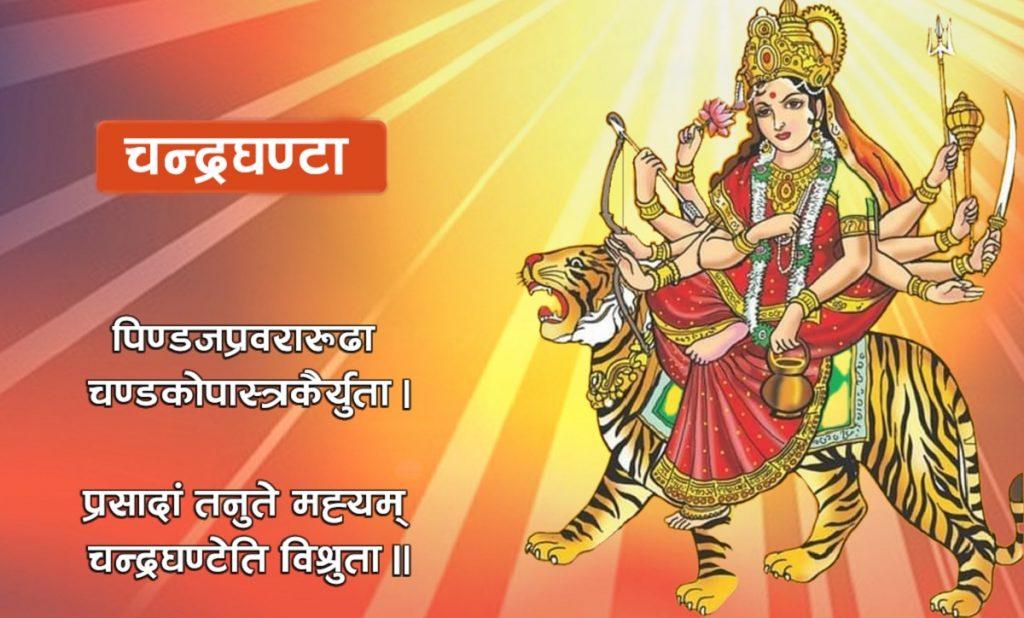On the third day of Navaratri, devotees across the country are worshipping Goddess Chandraghanta with great reverence at Dashain Ghar and personal prayer rooms. The deity is named Chandraghanta because she carries a bell (ghanta) shaped like the crescent moon (Chandra), as mentioned in various ancient religious texts and scriptures.
Former Associate Professor of Nepal Sanskrit University, Shriram Sapkota, explained that worshipping Goddess Chandraghanta during Navaratri is believed to bestow immense power. He added that according to the Markandeya Purana, “Chandrah Ghantayaam Yasya Sa,” meaning the deity who carries the moon on her bell is named Chandraghanta. Her form is yellow, and she is known for destroying demonic forces. On this day, devotees meditate on the Manipura Chakra, and it is believed that focusing on her form grants many divine powers.
As explained by Chintamani Bhattarai, Assistant Professor at Valmiki Vidyapeeth, various scriptures describe Goddess Chandraghanta as having the power to cleanse all sins. She embodies serenity and compassion, which is why musicians often worship her for inspiration. It is believed that meditating on her today brings a radiant glow to one’s forehead.
Navaratri celebrations began on Thursday with the Vedic ritual of Ghatasthapana, where barley (Jamara) was planted in Dashain Ghar. Ghatasthapana signifies the establishment of the goddess’s presence in the household, as per texts like the Shrimad Devi Bhagavata. Many devotees dedicate the nine days of Navaratri to worshipping the goddess at home or local Shakti Peeths.
On the first day of Navaratri, the goddess Shailaputri, the first of the Navadurga, was invoked and worshipped. On the second day, Friday, the goddess Brahmacharini was honored. Today, the third day, is dedicated to the worship of Goddess Chandraghanta.
Throughout Navaratri, sacred texts like Durga Saptashati (Chandi) and Shrimad Devi Bhagavata are recited at the site of Ghatasthapana. Worshipping the goddess during these nine days is believed to grant strength, wealth, and wisdom. Followers of the Vedic Sanatan tradition celebrate Navaratri from Ashwin Shukla Pratipada to Navami every year, with the blessings of the goddess being shared as Prasad from Vijayadashami to Kojagrat Purnima, marking the 15-day-long Dashain festival.
The nine forms of Durga worshipped during Navaratri include Shailaputri on the first day, Brahmacharini on the second, Chandraghanta on the third, Kushmanda on the fourth, Skandamata on the fifth, Katyayani on the sixth, Kalaratri on the seventh, Mahagauri on the eighth, and Siddhidatri on the ninth. Collectively, these forms are known as Navadurga.
During Navaratri, temples across Nepal witness large crowds of devotees offering prayers and performing rituals, especially at Shakti Peeths. In addition to the Dashain festivities, devotees flock to temples on Wednesdays, Thursdays, Fridays, and Saturdays to offer special prayers to the goddess.






